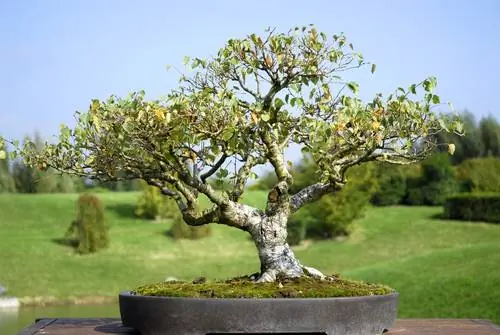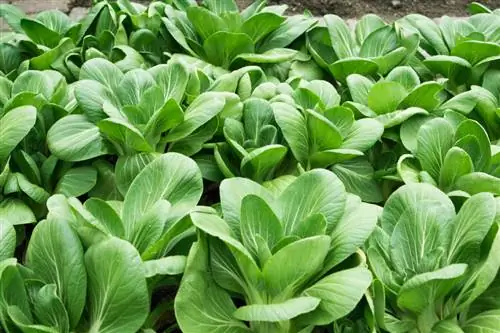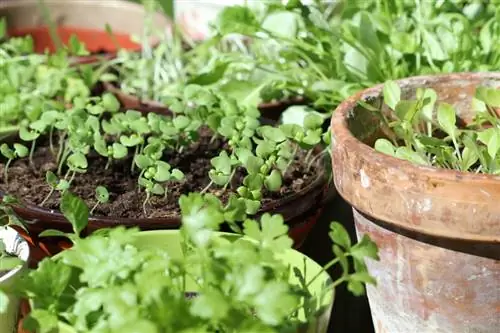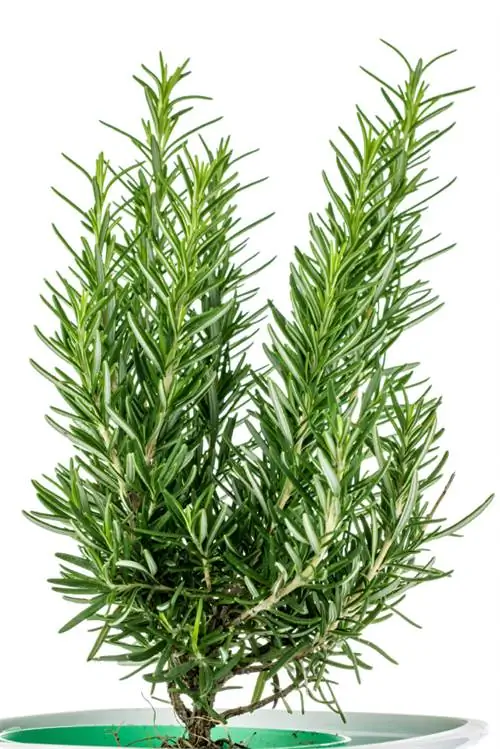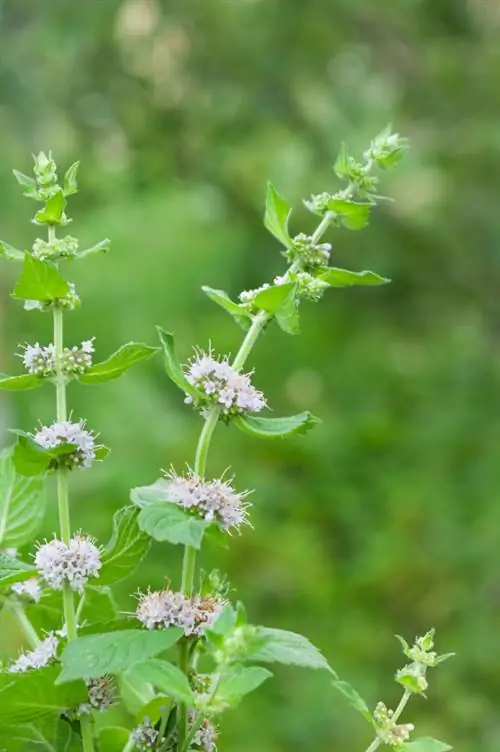- Author admin [email protected].
- Public 2023-12-16 16:46.
- Last modified 2025-01-23 11:21.
The bonsai culture, which traditionally comes from the Far East, brings whole trees in small format directly into your own four walls or in the garden in a cute way. You can find out here whether the birch is suitable as a bonsai and how you can best cultivate and maintain a dwarf tree of the Betula genus.

How to cultivate a birch tree as a bonsai?
Despite their capriciousness, birch trees can be grown as bonsai by positioning them in sunny to partial shade, watering them regularly and pruning them during the winter months. Fertilize after the first shoots and ensure optimal drainage to maintain a he althy bonsai birch tree.
Birch as bonsai
Among fans of the art of the tree in a bowl - which is what the word bonsai means - creations made from birch plants are considered rarities. The birch tree has a reputation for being quite a difficult bonsai tree. Because it needs a location that is flooded with intense sunlight or at least very light partial shade and can quickly drop an entire branch if it is excessively dry. Despite these capricious properties of the tree, which is so resilient in the wild, bonsai breeding is worthwhile: because if the conditions are right, an extremely impressive tree is created.
First steps to bonsai birch
If you dare to use a birch tree as a bonsai, you can buy ready-made small dwarf trees in a garden center, tree nursery or special bonsai nursery. Alternatively, there is sometimes a so-called Yamadori in the wild, i.e. digging up a small tree as a boulder and planting it. In addition, you can grow your small birch tree from seeds. You should definitely ensure the best possible drainage in the pot. This means that the water must be able to drain away easily.
Place the bonsai in sunny to partial shade, but avoid intense heat. This can dry out the substrate. However, birches are generally very light-requiring trees, and the trunk only shines in its characteristic white if there is enough brightness available.
Cut bonsai birch correctly
The beauty of cultivating your own bonsai trees is that you can give them exactly the shape you want by cutting them appropriately. However, whenever you cut your bonsai birch, it is important to immediately treat the cut area with a wound protection product (€10.00 on Amazon), as birch trees are highly prone to infections. Avoid pruning your birch tree in spring and summer. The intensive water flow in this phase could cause the dwarf tree to bleed to death. Better choose the period between November and February.
The birch tree usually provides its own design options through its natural growth form. To prune, shorten new shoots with ten or more leaves to around two leaves. Wiring, which is typical when cultivating bonsais, is possible. However, due to the rapid growth of the birch, you should always replace the wires as soon as possible. To avoid cold snaps in winter, avoid wiring this season.
How to care for your bonsai birch tree
- Repot annually due to strong root formation, preferably in autumn or early spring
- Do not cut the roots until the first shoots appear, as freshly cut roots are not immediately frost-proof
- water daily in hot weather
- Never allow the substrate to dry out, but avoid waterlogging
- Fertilizing after the first leaves have sprouted is possible until autumn
- For overwintering, it is best to bury the ball in the garden soil or store it in a box with a mixture of sand and peat on the balcony or terrace.

